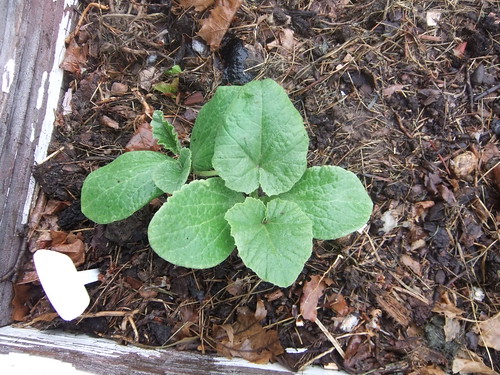Post by keen101 (Biolumo / Andrew B.) on Jul 3, 2012 16:30:25 GMT -5
I have a new topic that I’m curious about today. The topic is foliage and fruit color adaptions in plants that allow them to survive. I tried to do a search online about it, but i didn't find much because i really didn't know what to search for. Any research articles on this topic would be interesting.
Anyway, i was thinking about the variation in my squash this year. My favorite so far is one of the wild ones from Utah. One of them is different in the fact that it's leaves are a slightly silvery-bluish color. I am favourable to this phenotype because i am under the impression that it may actually help the plant with drought tolerance. From what i've read many desert adapted plants also are described to have silvery-blue or bluish-grey colored foliage as well. Does this coloring help to reflect intense sunlight? If so this would be very beneficial here since i live at such a high altitude. I have seen local native desert adaptive daisy's that also have this bluish-green tint to them, and they are starting to spread everywhere.
alanbishop.proboards.com/index.cgi?board=stuff&action=display&thread=5177&page=5
From my own observations (and unintentional experiments) im also led to the conclusion that anthocyanins are also often found in plants that are adapted to cold temperatures, or found around fruit/seeds as a possible UV light filter. Many of the wild thistles and weeds i have observed to have purple/green mottling which suggests to me that they are adapted to growing in cold conditions for at least part of their life. (i found a large thistle yesterday that was taller than me and had a stem that was almost larger than my hand).
Here is something i found online:
Thoughts? Ideas?
Anyway, i was thinking about the variation in my squash this year. My favorite so far is one of the wild ones from Utah. One of them is different in the fact that it's leaves are a slightly silvery-bluish color. I am favourable to this phenotype because i am under the impression that it may actually help the plant with drought tolerance. From what i've read many desert adapted plants also are described to have silvery-blue or bluish-grey colored foliage as well. Does this coloring help to reflect intense sunlight? If so this would be very beneficial here since i live at such a high altitude. I have seen local native desert adaptive daisy's that also have this bluish-green tint to them, and they are starting to spread everywhere.
alanbishop.proboards.com/index.cgi?board=stuff&action=display&thread=5177&page=5
From my own observations (and unintentional experiments) im also led to the conclusion that anthocyanins are also often found in plants that are adapted to cold temperatures, or found around fruit/seeds as a possible UV light filter. Many of the wild thistles and weeds i have observed to have purple/green mottling which suggests to me that they are adapted to growing in cold conditions for at least part of their life. (i found a large thistle yesterday that was taller than me and had a stem that was almost larger than my hand).
Here is something i found online:
DROUGHT TOLERANT SHRUBS - You may notice some of the same shrubs being listed for wet sites, this is because these shrubs are widely adaptable to wet or dry sites. When looking for shrubs that will get only the water mother nature provides in hot locations, foliage color is a good indicator of how hot and dry it can take it. Foliage color that has a silvery blue appearance has adapted that color to withstand these types of conditions. Like wise, plants that are variegated (green with white margins, freckles or stripes) have adapted there coloring to withstand darker conditions in shade.
Thoughts? Ideas?

